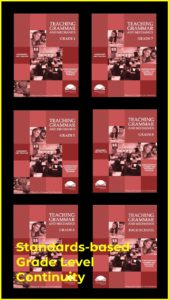Transitive and Intransitive Verbs
Transitive and Intransitive Verbs
Play the quick video lesson HERE and click the upper left back arrow to return to this lesson.
Common Core Language Standard 1
With verb forms the writer has two basic options: the writer can connect the verb to an object or not. That’s where transitive and intransitive verbs come into play.
Today’s grammar and usage lesson is on verbs. Remember that verbs must match their nouns. Remember that a verb can be singular or plural and must match the noun or pronoun it acts upon or modifies. Also remember that a verb shows past, present, or future action or state of being.
Now let’s read the grammar and usage lesson and study the examples.
A verb shows a physical or mental action or it links to something else as a state of being. Examples: He ran, He thinks, He will be
A transitive verbis a mental or physical action that acts upon a direct object. The direct object answers Whom? or What? from the verb. Example: Teachers give homework.
An intransitive verb acts without an object. Linking verbs are all intransitive verbs. Linking verbs include the “to be” verbs: is, am, are, was, were, be, being, been, and others such as become, seem, look, feel, smell, and appear. Examples: They know me.
Now circle or highlight what is right and revise what is wrong according to grammar and usage lesson.
Practice: It certainly appear that Matt hurt his mother’s feelings.
Let’s check the Practice Answers.
Grammar and Usage Practice Answers: It certainly appears that Matt hurt his mother’s feelings.
Now let’s apply what we have learned.
Writing Application: Write your own sentences using a transitive and intransitive verb.
*****

Pennington Publishing Grammar Programs
Teaching Grammar, Usage, and Mechanics (Grades 4, 5, 6, 7, 8, and High School) are full-year, traditional, grade-level grammar, usage, and mechanics programs with plenty of remedial practice to help students catch up while they keep up with grade-level standards. Twice-per-week, 30-minute, no prep lessons in print or interactive Google slides with a fun secret agent theme. Simple sentence diagrams, mentor texts, video lessons, sentence dictations. Plenty of practice in the writing context. Includes biweekly tests and a final exam.
Grammar, Usage, and Mechanics Interactive Notebook (Grades 4‒8) is a full-year, no prep interactive notebook without all the mess. Twice-per-week, 30-minute, no prep grammar, usage, and mechanics lessons, formatted in Cornell Notes with cartoon response, writing application, 3D graphic organizers (easy cut and paste foldables), and great resource links. No need to create a teacher INB for student make-up work—it’s done for you! Plus, get remedial worksheets, biweekly tests, and a final exam.
Syntax in Reading and Writing is a function-based, sentence-level syntax program, designed to build reading comprehension and increase writing sophistication. The 18 parts of speech, phrases, and clauses lessons are each leveled from basic (elementary) to advanced (middle and high school) and feature 5 lesson components (10–15 minutes each): 1. Learn It! 2. Identify It! 3. Explain It! (analysis of challenging sentences) 4. Revise It! (kernel sentences, sentence expansion, syntactic manipulation) 5. Create It! (Short writing application with the syntactic focus in different genre).
Get the Diagnostic Grammar, Usage, and Mechanics Assessments, Matrix, and Final Exam FREE Resource:
![]()




 Possessive Pronouns
Possessive Pronouns 

